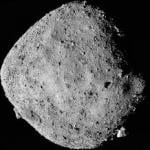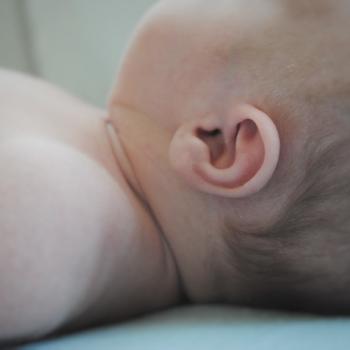
I felt surrounded by darkness, and I changed. Many of my childhood friends would have thought of me as light-hearted. I was that no longer. I was somber, heavy. I projected a dour and brooding persona. In short, it was darkness all around me, and I was becoming dark. I did not win the fight with the darkness. It broke me.
John begins his account of the resurrection by writing, “Early on the first day of the week, while it was still dark . . .” John could have noted that it was near sunrise as Mark does, but John is doing something else. For John, this “darkness” is a theological description of what was happening. When reading the works of John, remember that he uses dualisms. He positions good vs. evil, blindness vs. sight, and light vs. darkness against each other. In the first chapter of his Gospel, John points us to a tension that is significant in his Gospel, Jesus is the light of the world. The light of Christ shines in the darkness, and the darkness has no victory over the light. When John says that it was still dark, he is not describing the number of lumens available from the sun. He is saying that this was the high water mark of the power of evil. Jesus was dead. The tomb was sealed. Evil rejoiced. The power of death reigned. And Mary was broken. It was precisely then, in the darkness, that the power of God was at work. Jesus was resurrected from the dead. Evil was defeated.
When I got up from the floor after my collapse, I was determined to live again. What I did not notice, however, was that the seeds of healing had already been planted by God and some were already growing shoots.
The first part of healing was bodily. The second doctor who worked on my throat told me that he could no longer be of help. He referred me to Seth Cohen at Duke. Dr. Cohen had developed a revolutionary procedure to treat scar tissue in the throat. He inserted a fiber optic cable into the scar tissue and sent a laser through the cable. The laser raised the temperature of the tissue killing off the blood supply. It was amazing to watch the tissue wither up. In two short, outpatient treatments my throat was cured. In the years since my treatments with Dr. Cohen, I have not had a single episode with my throat.
Three or so days after losing my collapse, I ran out of my baclofen. Since Dr. Cohen had changed my diagnosis and treatment, I decided to stop taking it. Literally within hours, my body started to recover. The spasms that were so debilitating came to a stop. The pain that made me unable to move stopped completely. Within 36 hours, I was a new man. I was shocked. The medicine that I thought was saving my voice was poisoning me. I still had many physical challenges. My body chemistry was dreadfully off. My weight had ballooned. I was in terrible shape. For the first time in what seemed like forever, though, I felt like my body was going to be ok, eventually.
Beyond bodily healing, God was working with my mind. For the longest time, I had believed that I should pursue a Ph.D. in theology. Even back to my time in seminary, I can remember believing I should go in that direction. The opportunity never presented itself, and I happily earned the D.Min. from Baylor. I thought my educational experience was over. What I could not shake, though, was the desire to do additional study in theology. I thought about it almost every day. I confided my thinking to a friend who connected me to B. H. Carroll. After talking with the program director, I applied. I was accepted and began to study. The process of study was a relief from the darkness that surrounded me. I could get engrossed in the work and forget what was going on around me. Further, I had a way to begin to process what had happened, to think about God’s nature and evil, and to ask my questions in a non-threatening place. It was sheer grace.
As part of considering Ph.D. work, I took the GRE. I worked hard in preparation and was ready on test day. While the GRE has changed its scoring methods several times since I took the exam, when I took the GRE the grading scale was like the old SAT. Maximum scores were 800 quantatative and 800 verbal. With computer adaptive testing, results for the GRE are available immediately for the non-essay part. When my scores came up I was shocked, I had earned a 720 quantitative and 720 verbal. Scoring this high did not fit with the way I saw myself. I had always believed I was a reasonably bright person with a knack for theology. Now, I had visible evidence that I was much brighter than I ever thought I was.
Armed with new self-knowledge, I started to trust my own instincts and judgments more than I ever had before. What was difficult about my new self-belief was that many people were genuinely surpised that I stopped being deferential their opinions. I remembered reading in a psychology text that when a person changes, others who have depended on a set of bahaviors are upset and shocked. They intuiteively try to change the person back, resulting in conflict. Yes, there was conflict, but I was not going to relinquish my new self-belief.
Spiritual healing was much slower, mostly because the trauma was not over–there was still a divorce coming, and I knew it. I kept waiting for some grand spiritual enlightenment to heal my spirit. I kept longing for God to break through with a dramatic revelation where everything would be right again. It never happened. God just does not work that way in my life. What God does with me is very subtle and gradual. I have to confess that I get very impatient with that. It took a few years, but I did find that my image of my faith was not right. Jenni’s loss was not a “mortal wound.” My faith did not die. It did change in form as I learned from the events, but I have shed the idea of a wounded faith and that has been for the better.
My divorce was finalized in March of 2014. In April of 2014, I met Molly Rushing. I actually knew her father, Reggie, from seminary. Molly and I had been in the same circle of friends and colleagues for years. We had many mutual friends and acquaintances. How we had not met before April of 2014 I do not know. We met, and rather quickly Molly and I became an item. By October we were engaged. I think of Molly becoming part of my life as an important part of the healing process. I was not past my grief with Jenni. I was not past the break in my spiritual life. With Molly, however, I did not have to be. I could just be who I was and that was enough. In fact, that was exactly what she wanted. It was the first time in my adult life that I felt like I could be exactly who I was and it was ok. Molly’s presence was a gift of grace.
One of the moments I knew that I was healing came at work. One day something funny happened. I do not recall exactly what it was. I do remember belly laughing. It was one of those moments where I laughed so hard my face hurt. One of our staff members said, “I have never seen you laugh like that.” Then I knew I was healing. As Karl Barth says, “Laughter is the closest thing to the grace of God.”
When I look back, I can see that God was in the process of healing me even in my darkest hours. He was working to bring healing to my mind, body, soul, and relationships. When I thought I had reached the end, God rescued me. “While it was still dark . . .” God was at work in my life. There is simply no other way to describe what happened to me. I thought I had lost everything, including my soul. What I found is that even in the darkness, God is faithful. There were many times I felt “godforsaken,” yet God was with me even when I could not find Him. He became the light in my darkness.
“The light shines in the darkness and the darkness has not overcome it.” John 1.











